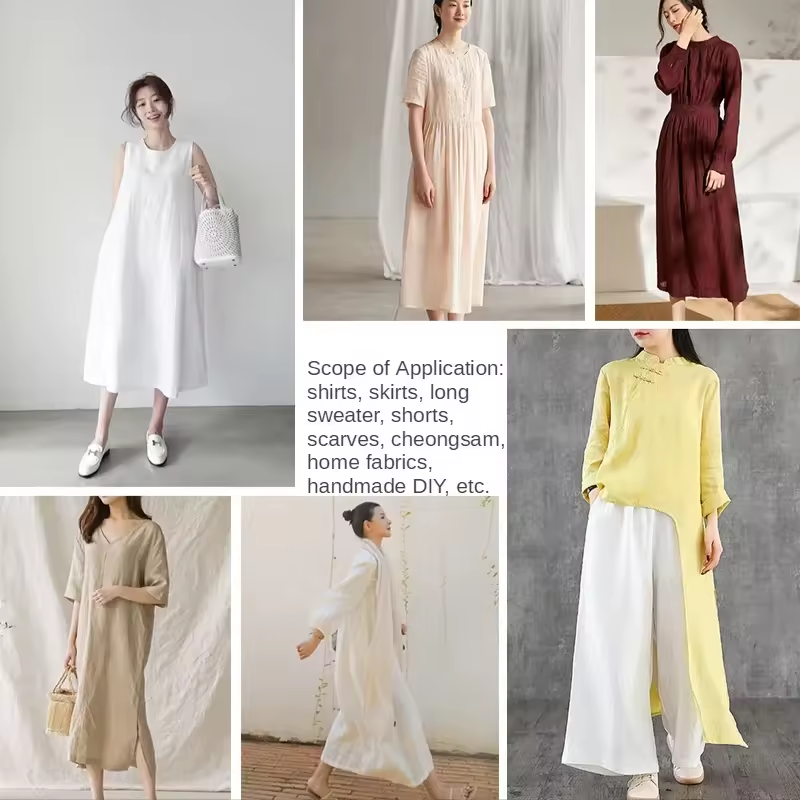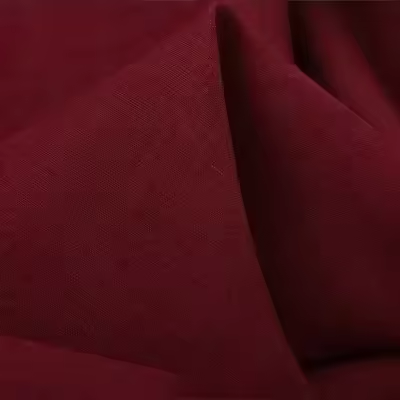When it comes to fabrics, comfort and breathability are key. This is where cotton-linen blends shine. Combining the best qualities of cotton and linen, these blends offer a delightful mix of softness, durability, and breathability. Let’s explore why cotton-linen blends are becoming a go-to choice for those who value comfort and style.
Cotton is well-known for its softness and ability to wick moisture. On the other hand, linen, made from the flax plant, is famous for its strength and breathability. By blending these two fibers, manufacturers create a fabric that takes advantage of both materials. The result? A textile that feels soft against the skin while remaining cool and airy.

One of the standout features of cotton-linen blends is their superior breathability. Linen fibers are naturally hollow, allowing air to circulate easily. This means that clothes made from cotton-linen blends are perfect for warm weather. You can stay cool and comfortable, even on the hottest days. Moreover, adding cotton makes the fabric less prone to wrinkling, giving it a more polished look.
Comfort is paramount when choosing clothing, and this blend excels in this area. Cotton’s softness ensures that the fabric feels gentle against your skin. At the same time, linen adds a lightweight, airy quality that enhances overall comfort. This combination makes this blend ideal for everything from casual wear to sleepwear.
In addition to comfort and breathability, cotton-linen blends are also durable. Linen fibers are stronger than cotton, which means they can withstand more wear and tear. This durability extends the lifespan of your garments, making them a wise investment. Plus, cotton-linen blends are easy to care for. They can often be machine-washed and require less ironing than pure linen garments.
Cotton-linen blends are incredibly versatile, making them a popular choice in the fashion world. From breezy summer dresses to tailored shirts, this fabric can be used for a variety of clothing items. Its natural texture adds a touch of elegance to any outfit, while its breathability ensures you stay comfortable all day long.
Lastly, these blends are more sustainable than many synthetic fabrics. Both cotton and linen are natural fibers, and their cultivation has a lower environmental impact than synthetic alternatives. Choosing these blends supports eco-friendly fashion practices, contributing to a healthier planet.
The manufacturing process of involves several stages, from harvesting the raw materials to weaving the final fabric. Here, we’ll take you through this fascinating journey step by step.
Next, the raw fibers need cleaning and processing. Cotton fibers are carded and combed to remove impurities and align the fibers. Meanwhile, flax fibers are dried, crushed, and combed to achieve a similar effect. This step ensures that both types of fibers are smooth and ready for spinning.

The cleaned and prepared fibers are then spun into yarn. During spinning, the cotton and linen fibers are twisted together to create a strong, uniform yarn. The blend ratio can vary, with some fabrics having more cotton and others more linen, depending on the desired texture and properties.
Once the yarn is ready, it moves on to the weaving stage. Weaving involves interlacing the yarns on a loom to create the fabric. The warp yarns run lengthwise, and the weft yarns run crosswise. This interlacing process determines the fabric’s strength and pattern.
After weaving, the fabric undergoes several finishing processes. These include washing, bleaching, dyeing, and sometimes printing. Each step enhances the fabric’s appearance, feel, and functionality. The fabric may also be treated to make it softer or to add special properties like water resistance.
Quality control is crucial to ensure that the final product meets the required standards. Inspectors examine the fabric for any defects, such as inconsistencies in the weave or unwanted marks. Only the highest quality fabric moves forward to the final stage.
Finally, the finished blend fabric is ready to be cut and sewn into various products. Manufacturers use patterns to cut the fabric into pieces, which are then stitched together to create items like clothing, bedding, and home décor.
This fabric combines the best qualities of both cotton and linen, making it a popular choice for clothing, home textiles, and more. Follow these easy care and maintenance tips to keep your items looking fresh and lasting longer.
Firstly, always check the care label on your blended items. Most fabrics are machine washable. However, for best results:
Moreover, avoid using bleach as it can weaken the fabric and cause discoloration.
Bamboo Socks: A Complete List of the Pros and Cons
Bamboo Facts: 16 Fun Facts About Bamboo You Should Know
Next, consider the drying process:
This tends to wrinkle, but you can easily manage this:
Proper storage is essential to maintain the quality of your blend:

Accidents happen, but quick action can save your fabric:
Finally, for long-term maintenance:
Firstly, always check the care label on your cotton linen items. Most fabrics are machine washable. However, for best results:
Moreover, avoid using bleach as it can weaken the fabric and cause discolouration.
Read more: Bamboo Fabric In Clothing: Is Bamboo Fiber Sustainable?
Versatile Bamboo Fabric Uses: From Pajamas to Activewear
In summary, cotton-linen blends offer an exceptional combination of comfort and breathability. They bring together the softness of cotton and the airy quality of linen, resulting in a fabric that’s perfect for warm weather. Additionally, their durability, easy care, versatility, and eco-friendliness make them a fantastic choice for anyone looking to enhance their wardrobe. So next time you’re shopping for clothes, consider opting for these blends – your skin (and the planet) will thank you!
This blends combine the softness of cotton with the breathability and strength of linen. This results in a fabric that is comfortable, durable, easy to care for, and versatile in fashion applications. Additionally, these blends are more eco-friendly compared to synthetic fabrics.
While cotton-linen blends are especially popular in warm weather due to their breathability, they can also be worn year-round. They can be layered in cooler seasons with other clothing to provide comfort and style without excessive bulk.
Most blend garments can be machine-washed. Use a gentle cycle with cold water to preserve the fabric’s quality. It’s best to air dry these garments to avoid shrinkage, though some items may be tumble-dried on a low setting. Ironing may be required to maintain a smooth appearance, but these blends generally wrinkle less than pure linen.
Thanks to the cotton fibers, this blends wrinkle less than pure linen. However, due to the presence of linen, they may still develop some wrinkles. These wrinkles often add to the natural, relaxed look of the fabric, but if a more polished appearance is desired, light ironing can help.
Yes, this blends tend to be more durable than pure fabrics. Linen fibers are inherently strong, and when combined with cotton, they create a robust fabric that can withstand regular wear and washing.
Absolutely! Cotton-linen blends can be styled for both casual and formal occasions. Their natural texture and drape make them suitable for a variety of garments, including tailored shirts, dresses, and suits. The key is to choose designs and accessories that match the event’s formality.
Yes, cotton-linen blends are more sustainable compared to many synthetic fabrics. Both cotton and linen are natural fibers with lower environmental impacts during cultivation and production. Choosing these blends supports eco-friendly fashion practices.